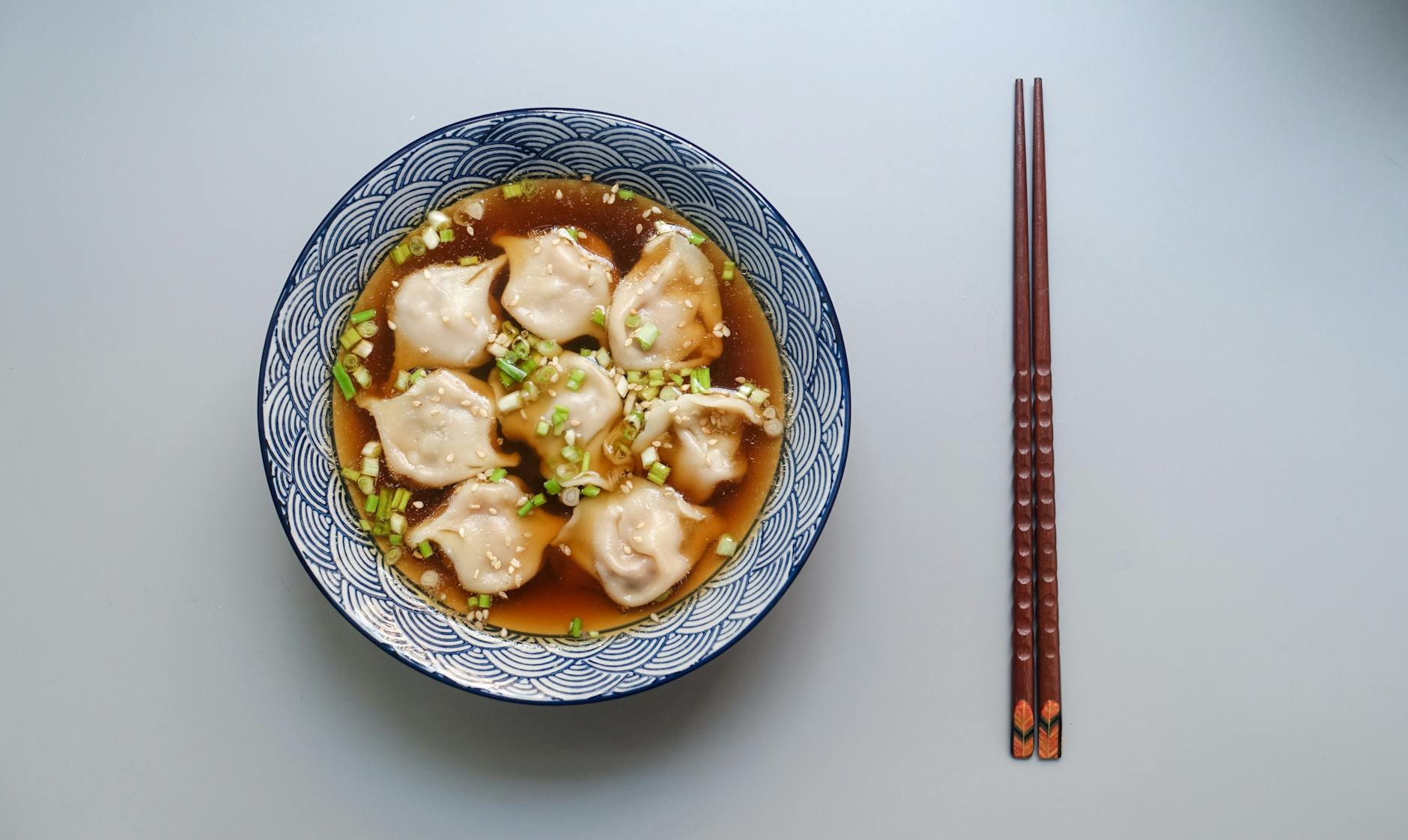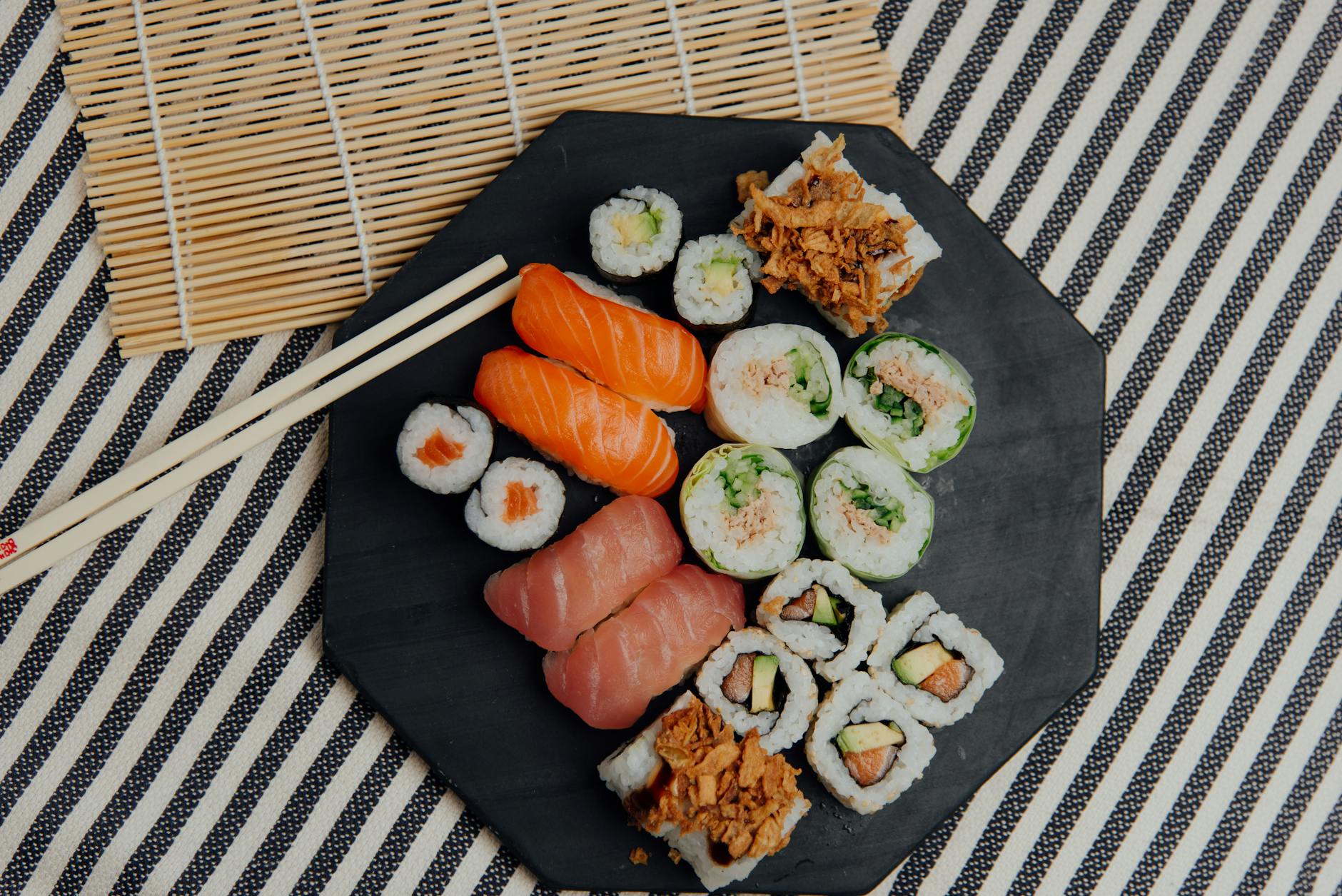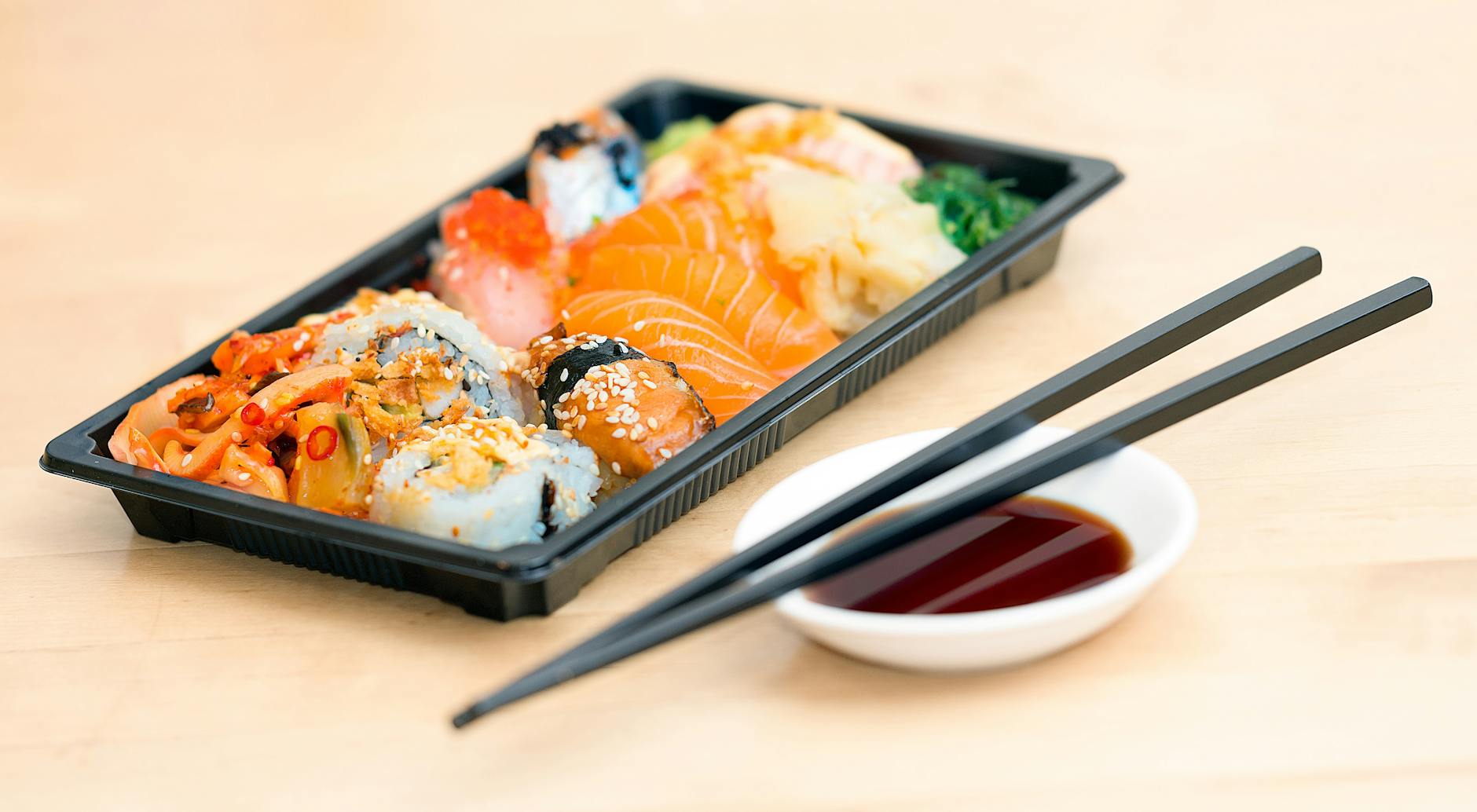Chopsticks, those slender utensils that have become synonymous with Asian cuisine, have a fascinating history that dates back thousands of years. In this blog post, we embark on a journey to unveil the origins of chopsticks, exploring their historical significance, cultural evolution, and enduring popularity. Join us as we dive into the rich heritage of chopsticks and uncover the stories behind their emergence.
The Evolution of Chopsticks
Chopsticks are believed to have first been used in China around 5000 years ago. Initially, chopsticks served as cooking utensils, and only later did they come to be used as eating utensils. Early Chinese chopsticks were made from bronze, and later evolved into ones crafted from silver, ivory, jade, and bamboo. The first chopsticks were originally large and used to stir cooking pots. It wasn’t until the invention of ceramic or porcelain dishes that chopsticks became the small, elegant utensils we know today. In medieval times, the use of chopsticks gradually spread throughout Asia, including Japan, Korea, and Vietnam.
The Transition from Cooking to Dining
- Early Uses: The initial use of chopsticks was for cooking, especially for stirring and reaching into deep pots of boiling water or oil.
- Materials: Bronze was the material of choice initially, followed by silver, ivory, jade, and eventually bamboo, each material reflecting the technology and resources available at the time.
- Miniaturization: The invention of ceramic and porcelain dishes led to the miniaturization of chopsticks, making them more suited for eating rather than just cooking.
The Symbolism and Cultural Significance
Chopsticks not only had a practical function in Asian cuisine but also gave rise to many cultural and symbolic meanings. In Chinese culture, chopsticks symbolize gentleness and benevolence. Moreover, they represent a method of Confucianism by allowing people to share a communal meal to promote social harmony. In Japan, chopsticks play an important role in the country’s tea ceremony tradition. Chopsticks were viewed as ritual objects and were felt to possess the ability to transmit the spirit and culture of the wielder. In Korea, it is believed that using chopsticks longer than one’s breath length will bring bad luck or even death in the family.
Cultural and Ritual Importance
- China: Chopsticks symbolize gentleness and benevolence, and their use promotes social harmony.
- Japan: In Japan, chopsticks are integral to the tea ceremony, viewed as ritual objects that transmit the wielder’s spirit and culture.
- Korea: Korean beliefs include superstitions regarding the length of chopsticks and their impact on one’s fortune and family.

Chopsticks in Different Cultures
Due to the rich history of chopsticks, they have evolved into various styles and techniques required for different types of cuisine. Japanese chopsticks, for example, are embellished and round at the tip, and are used for eating sushi. In contrast, Korean chopsticks are thick, flat, and made of metal, often used with ssam, which are lettuce or perilla leaves. Chinese chopsticks are relatively long and the tips are slightly different from each other to get various jobs done. Vietnamese chopsticks are a little shorter and thinner. In comparison, Thai cuisine often uses chopsticks only for noodles or soups, as the majority of their dishes are eaten with a fork and spoon.
Varied Designs for Varied Cuisines
- Japanese Chopsticks: Known as “hashi,” these are typically slender and round-tipped, perfect for the delicate task of picking up sushi.
- Korean Chopsticks: Called “jeotgarak,” these are often metal, flat, and thick, suitable for gripping Korean barbecue and ssam.
- Chinese Chopsticks: These are longer and vary slightly in tip design, making them versatile for various Chinese dishes.
- Vietnamese Chopsticks: Known as “đũa,” these are usually bamboo, shorter, and thinner, reflecting the cuisine’s needs.
- Thai Chopsticks: Used primarily for noodles and soups, as Thai cuisine generally relies on forks and spoons.
Unraveling the Mysteries
There is a mystery surrounding the origin of chopsticks. Many theories exist as to why chopsticks were chosen in the first place. Some believe that chopsticks originated from the need to cook food in boiling water and oil, which would have been difficult with bare hands. Others argue that chopsticks were used to avoid embarrassing stains on their hands as they ate. Yet another theory is that chopsticks were chosen because they were less likely to damage the delicate pottery favored by the Chinese wealthy of the day. Whatever the reason, chopsticks have since become a vital part of Asian food culture and are appreciated for their beauty and unique functionality.
Theories Behind Chopsticks’ Adoption
- Cooking Necessities: Chopsticks were likely first used to handle food in boiling water and oil.
- Cleanliness: They helped avoid stains on hands while eating.
- Protection of Pottery: Chopsticks were gentler on delicate pottery, preferred by the affluent in ancient China.
Fun Games, Activities, and Benefits for Children
Chopsticks are not just traditional dining utensils; they also serve as excellent tools for developing various skills in children. From enhancing hand dominance and pre-handwriting abilities to strengthening their grasp, chopsticks offer a fun and engaging way to boost several developmental skills. In this comprehensive guide, we’ll explore a variety of games and activities involving chopsticks, and delve into the numerous benefits these simple tools provide.
Games with Chopsticks
Relay Race
A relay race with chopsticks can be an exciting and educational activity for children. Here’s how to set it up:
- Materials Needed: Chopsticks, a bucket, small objects (e.g., marbles, beads, cotton balls, dry cereal).
- Setup: Place a bucket at one end of the room and the objects to be picked up at the other.
- Instructions: Have two or more children race to see who can pick up and fill their bucket the fastest. Alternatively, use a stopwatch to time how long it takes each child to pick up all the objects and place them in the bucket one piece at a time.
This activity not only promotes a competitive spirit but also enhances hand-eye coordination and fine motor skills.
Board Games
Integrating chopsticks into board games adds an interesting twist and increases the challenge. Here are some examples:
- Thin Ice
- Hi Ho Cherry-O
- Candy Land
Using chopsticks instead of hands to move pieces or pick up objects during the game helps children improve their dexterity and control.
Crafts
Craft projects can be more engaging and beneficial when chopsticks are used. Here’s how:
- Materials Needed: Chopsticks, various craft decorations (e.g., sprinkles, puff balls, decorative eyeballs, pipe cleaners, string or ribbon).
- Instructions: Use chopsticks to pick up and place decorations on the craft project.
This not only makes crafting more fun but also enhances precision and hand strength.

Three Ways to Add Challenge for Greater Benefits
To further increase the benefits of using chopsticks, consider incorporating these challenges:
Add Resistance
- Method: Place a rubber band around the chopsticks.
- Benefit: Increases the hand strength required to manipulate the chopsticks.
Use Non-Dominant Hand
- Method: Switch hands for the entire task or halfway through the activity.
- Benefit: Enhances concentration and bilateral coordination.
Reaching Across Midline
- Method: Place objects on the child’s non-dominant side.
- Benefit: Encourages crossing the midline, which is crucial for brain development and coordination.
Benefits of Using Chopsticks
Using chopsticks offers a multitude of developmental benefits for children, including:
Promotes Hand-Eye Coordination
Manipulating chopsticks requires precise movements that enhance hand-eye coordination. This skill is essential for everyday tasks and academic activities.
Pre-Handwriting Skills
Chopsticks serve as a great pre-handwriting tool. They help children develop the fine motor skills needed for writing by promoting finger isolation and manipulation.
Teaches Finger Isolation and Manipulation
Using chopsticks requires the use of individual fingers, which teaches finger isolation. This is crucial for tasks that require dexterity, such as writing and typing.
Encourages Grasping
The act of holding and maneuvering chopsticks strengthens the grasp, which is beneficial for various tasks requiring hand strength and control.
Strengthens Hands and Increases Endurance
Regular use of chopsticks helps in building hand muscles and increasing endurance, which is important for tasks that require prolonged hand use.
Improves Fine and Visual Motor Skills
Chopstick activities improve fine motor skills (small muscle movements) and visual motor skills (the coordination of eyes and hands). These skills are vital for tasks like drawing, playing musical instruments, and sports.
Frequently Asked Questions (FAQs)
Why are chopsticks called chopsticks?
The term “chopsticks” comes from the Chinese Pidgin English word “chop,” which means “quick.”
What materials are chopsticks made of?
Chopsticks can be made from various materials including wood, bamboo, metal, bone, and plastic.
How are Japanese chopsticks different from Chinese chopsticks?
Japanese chopsticks are typically shorter, with rounded tips, while Chinese chopsticks are longer and have squared tips.
Why do Koreans use metal chopsticks?
Koreans traditionally use metal chopsticks because they are more durable and hygienic compared to wood or bamboo.
What is the proper way to hold chopsticks?
The proper way to hold chopsticks involves resting one stick between your thumb and index finger and the other between your thumb and middle finger, using your index and middle fingers to move the top stick.
Can chopsticks be reused?
Wooden and bamboo chopsticks are usually disposable, while metal, bone, and plastic chopsticks can be reused after washing.
Are there any superstitions associated with chopsticks?
Yes, many cultures have superstitions regarding chopsticks, such as not sticking them upright in a bowl of rice, as it resembles incense sticks at a funeral and is considered bad luck.
How have chopsticks influenced global cuisine?
Chopsticks have influenced global cuisine by introducing a unique way of eating and preparing food, leading to the adaptation of chopsticks in various cultures beyond Asia.
How do chopsticks help in developing pre-handwriting skills?
Chopsticks require precise finger movements and coordination, which help develop the fine motor skills necessary for handwriting.
Can using chopsticks improve hand strength?
Yes, using chopsticks regularly can strengthen hand muscles and increase endurance, beneficial for various tasks requiring hand strength.
Are there specific games that work well with chopsticks?
Yes, games like Thin Ice, Hi Ho Cherry-O, and Candy Land can be adapted to use chopsticks, adding an extra challenge and improving dexterity.
How can I make chopstick activities more challenging for my child?
You can add resistance by placing a rubber band around the chopsticks, have the child use their non-dominant hand, or encourage them to reach across their midline to pick up objects.
What age is appropriate for introducing chopsticks to children?
Children as young as three years old can begin using chopsticks with adult supervision. Start with beginner-friendly chopsticks that are easier to handle.
In Conclusion
Chopsticks have a long and fascinating history that dates back thousands of years. They not only serve a practical purpose in Asian cuisine but also hold cultural and symbolic meaning that varies between countries. Additionally, there are many different styles and techniques required for different types of cuisine. One of the most incredible things about chopsticks is how they have evolved over the years while still retaining their original function and form.
But then again, chopsticks are more than just utensils for eating; they are versatile tools that can significantly aid in the developmental growth of children. By incorporating chopsticks into games, crafts, and various activities, children can enhance their hand-eye coordination, pre-handwriting skills, finger isolation, grasp strength, and more. These activities are not only educational but also provide a fun and engaging way for children to develop essential skills that will benefit them throughout their lives. To truly appreciate chopsticks is to embrace the complex history and culture that has evolved with them.



